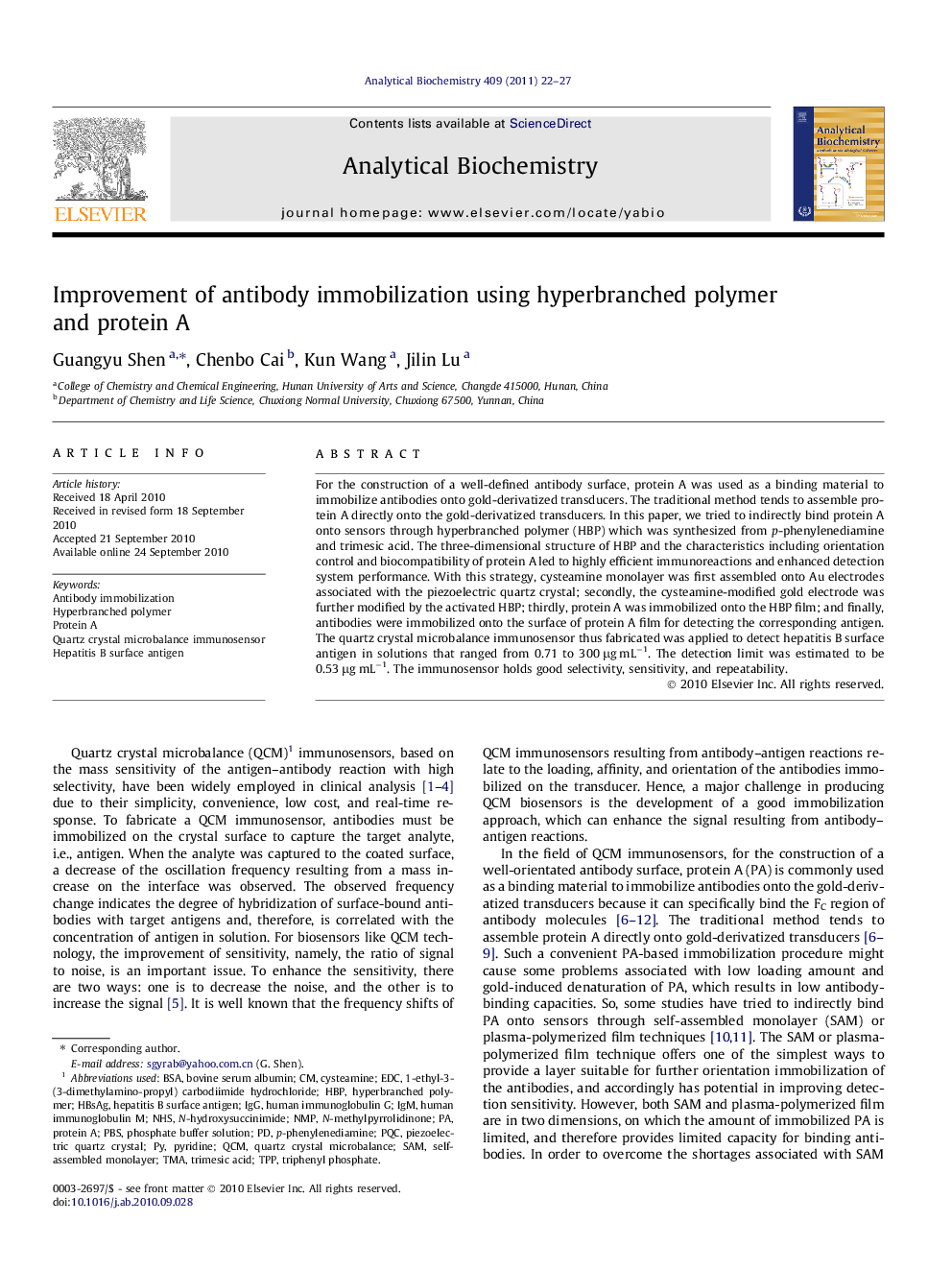| Article ID | Journal | Published Year | Pages | File Type |
|---|---|---|---|---|
| 1174798 | Analytical Biochemistry | 2011 | 6 Pages |
For the construction of a well-defined antibody surface, protein A was used as a binding material to immobilize antibodies onto gold-derivatized transducers. The traditional method tends to assemble protein A directly onto the gold-derivatized transducers. In this paper, we tried to indirectly bind protein A onto sensors through hyperbranched polymer (HBP) which was synthesized from p-phenylenediamine and trimesic acid. The three-dimensional structure of HBP and the characteristics including orientation control and biocompatibility of protein A led to highly efficient immunoreactions and enhanced detection system performance. With this strategy, cysteamine monolayer was first assembled onto Au electrodes associated with the piezoelectric quartz crystal; secondly, the cysteamine-modified gold electrode was further modified by the activated HBP; thirdly, protein A was immobilized onto the HBP film; and finally, antibodies were immobilized onto the surface of protein A film for detecting the corresponding antigen. The quartz crystal microbalance immunosensor thus fabricated was applied to detect hepatitis B surface antigen in solutions that ranged from 0.71 to 300 μg mL−1. The detection limit was estimated to be 0.53 μg mL−1. The immunosensor holds good selectivity, sensitivity, and repeatability.
